UptimeKuma stands out as an open-source monitoring platform known for its extensive capabilities and flexibility. It empowers organizations to effectively monitor and optimize website uptime, performance metrics, and server health. With a range of customizable features and integrations, UptimeKuma supports customized monitoring solutions without requiring advanced technical expertise. For deploying Uptime Kuma, Hetzner is an ideal choice due to its reliable, and easy-to-use cloud infrastructure. ServerAvatar simplifies the deployment of Uptime Kuma on Hetzner VPS (Virtual Private Server) by providing a user-friendly interface that automates the setup process, making it accessible to users with various levels of technical expertise.
Create a Server in Hetzner
Getting Started with Hetzner:
Hetzner provides a range of services like dedicated hosting, virtual private servers, colocation services, and domain registration. Hetzner is known for having reliable systems and competitive prices in web hosting. Its services work well for both individual users and businesses that need strong hosting options.
Step 1: Login to Hetzner Cloud Console
- Go to the Hetzner Cloud website and sign in using your credentials.
Step 2: Create a New Project (Optional)
- If you don't have an existing project, create a new one by clicking on the New Project button.
![]()
- Enter a name for your project and click Add Project.
![]()
Step 3: Select a Project
- Select the project in which you wish to create your server.
![]()
Step 4: Create a New Hetzner Cloud Server
- Navigate to the Servers sub-menu and click on Add Server to begin creating your server.
![]()
Step 5: Configure your server
-
Select a Location: Select the data center location where you want to deploy your server. Choose the region that is closest to your target audience for better performance.
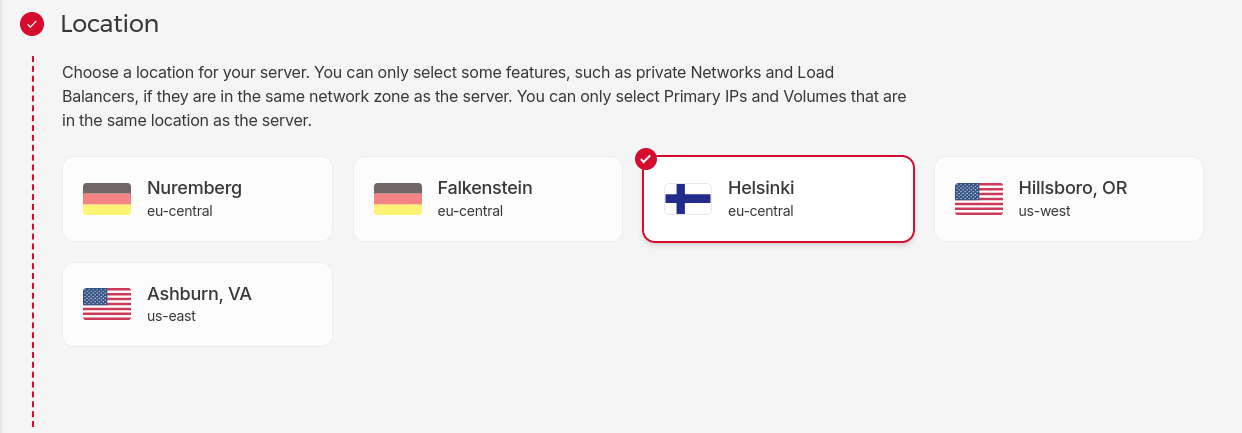
-
Select an Image: ServerAvatar supports both Ubuntu 20.04 and Ubuntu 22.04. Therefore, choose one of these supported operating systems.
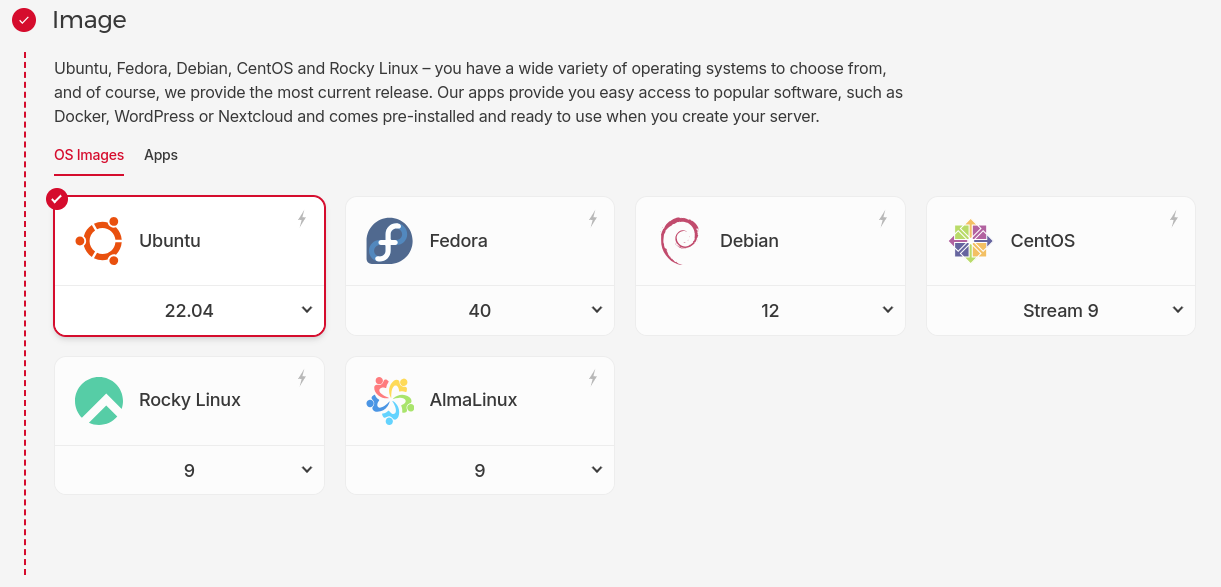
-
Select a Server Type: Hetzner provides various plans with different configurations of CPU, RAM, and storage. Select the server type based on your requirements. The minimum requirements for hosting Uptime Kuma are 1GB or more of RAM for handling more extensive monitoring tasks and 1GB or more of disk space to accommodate the application, logs, and data. The exact amount will depend on your usage and data storage needs.
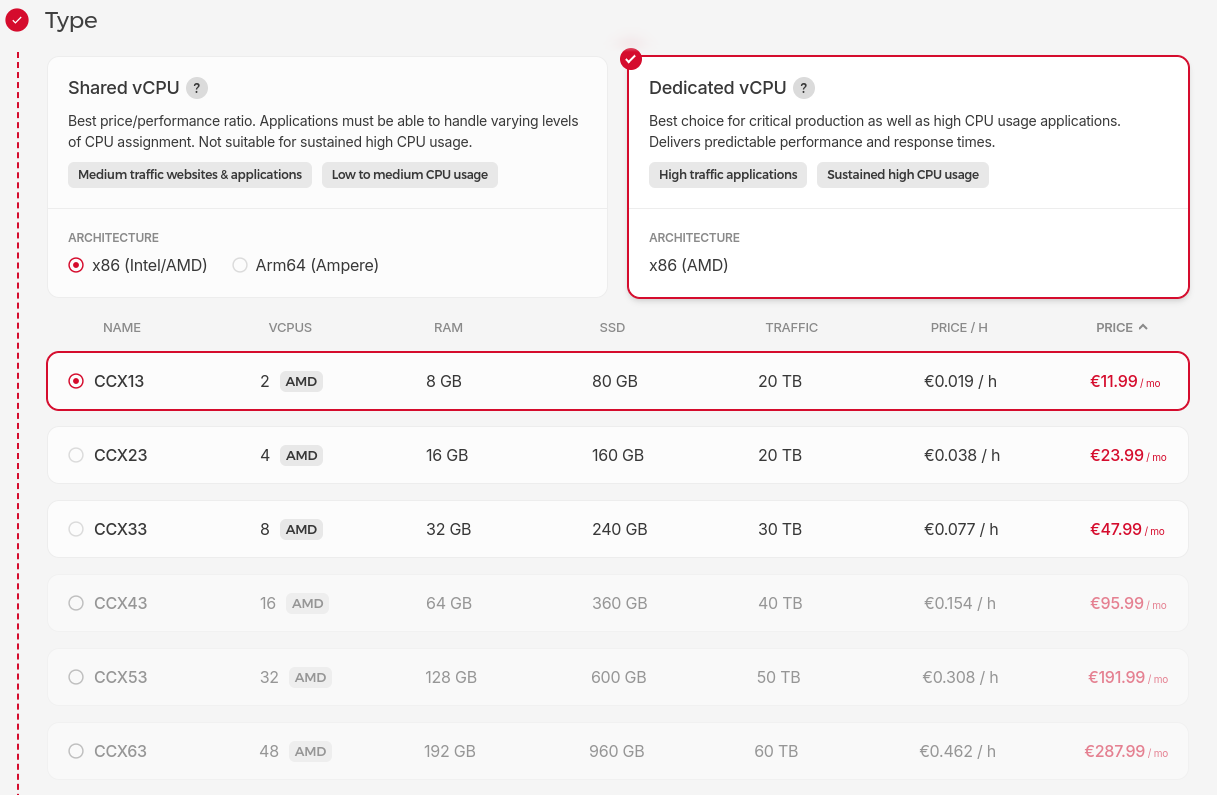
-
Select Networking: Select from three networking options for your server. Private networks allow you to securely connect servers within the same data center without going over the public internet.
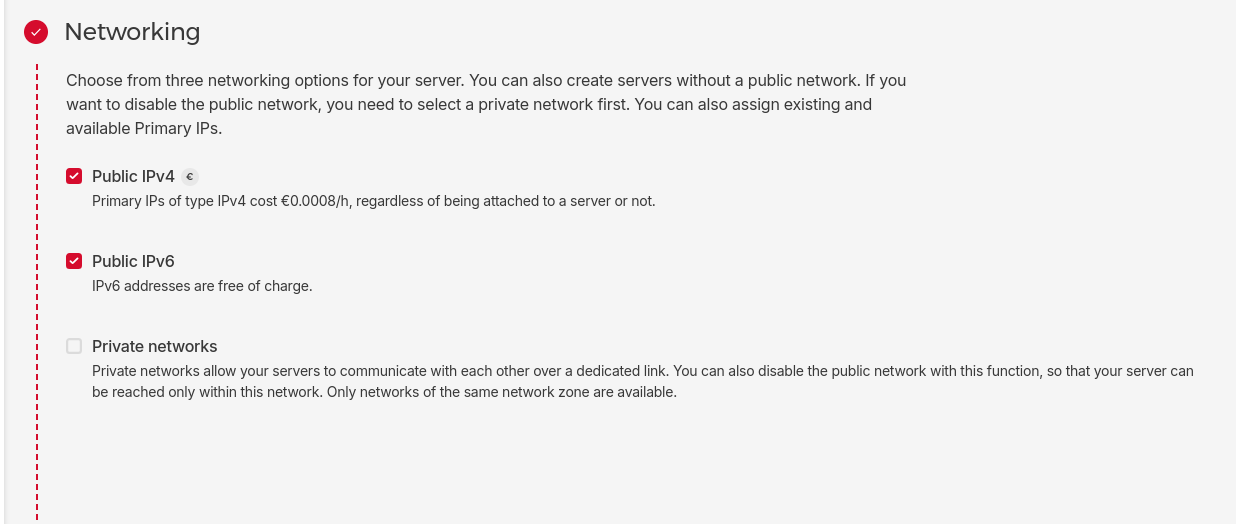
-
SSH Key or Root Password: Select an SSH Key if you want to authenticate with an SSH key. This method is recommended over using a root password for enhanced security. If you choose SSH key authentication, Hetzner will disable password-based authentication by default. Otherwise, you will receive the root password via email.
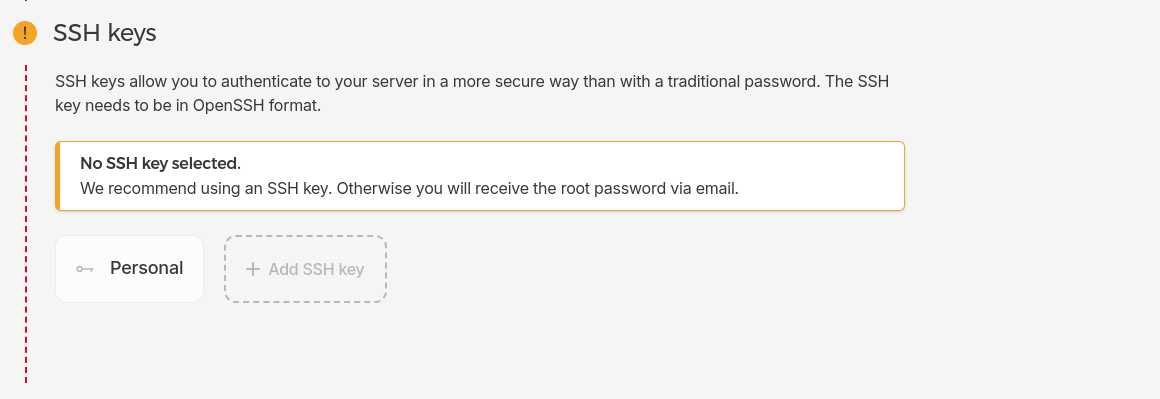
-
Add a Firewall Rule: Configure firewall rules to control incoming and outgoing traffic based on IP addresses, ports, and protocols for improved security.

- Additional Options (Optional): Configure additional options such as Backups, Placement Groups, Volumes, Labels, and Cloud Config as per your Requirements.
-
Give a Server Name: Enter a server name for easy identification.

-
Finalize and Create: Review your configuration settings to ensure that everything is configured correctly. Click on the Create & Buy Now button.9. Finalize and Create: Review your configuration settings to ensure that everything is configured correctly. Click on the Create & Buy Now button.
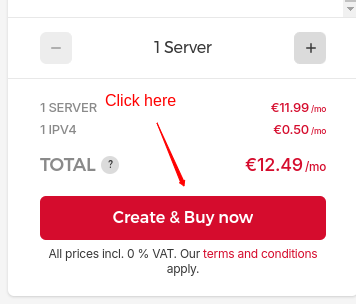
Step 6: Access Your Server
- Once the server is deployed, it will appear on your Hetzner Cloud dashboard. Use the provided IP address and SSH key (if configured) to access your server via SSH. Now, You can connect your Server with ServerAvatar for Server management.
![]()
Initial Server Configuration
The Initial server configuration includes the installation and configuration of various packages required to host your website. Usually, You have to write commands and modify configuration files. Luckily, With ServerAvatar, Your full server configuration and optimization can be automated.
Here are the three ways to automatically configure your server with ServerAvatar.
Connect a server using a direct method
- Login/Register to ServerAvatar account, click the Create button from the right side of the screen, and select Server from the dropdown.
- Select Direct Method in the serve connecting method section.
- Type the Server Name as per your choice.
- Select a Tech Stack as per your need. You can either select Apache, Nginx, OpenLiteSpeed or Node Stack.
- Select a Database: MySQL, MariaDB or MongoDB.
- Enable the toggle if you want to install the latest LTS version of node.js on your server.
- Select a Management plan and click the Connect Now button.
- You’ll see the command on your screen. Login to your server using an ssh connection and execute that command as a root user.
- The server connection process will be started on your ServerAvatar account after executing the command.
Connect a server using integration
- Login/Register to your ServerAvatar account, navigate to the Integration tab from the sidebar of the panel, and access Cloud Platform from the dropdown.
- Now Select a cloud platform you want to link with ServerAvatar.
- The popup form will appear on your screen. Enter details to link your cloud provider account. The integration method is different based on the cloud provider you select.
- You can integrate five different cloud provider platforms with ServerAvatar, which is-
Check the above link of cloud platforms to know more about integrating cloud platforms with ServeAvatar.
Connect a server using commands
Step 1. Login to your server using root user
Once you create a server as per your requirements, connect to your server using an ssh connection and execute the below three commands as a root user in your server console area.
wget https://srvr.so/install
chmod +x install
./install
Step 2. Select a web server
It will ask you which web server you would like to install on your server: Apache, Nginx, OpenLiteSpeed or Node Stack. Type anyone that you would like to install on your server and hit the enter button.
Step 3. Claim your server
Completing the process will give you a link to claim your server.
Open the link on your browser to access the ServerAvatar server panel.
Deploy Self Hosted Monitoring Tool Uptime Kuma on Cloud using ServerAvatar
Note: You must have a Server connected in Node Stack.
What is Uptime Kuma?
Uptime Kuma is a tool that helps you keep track of whether your websites or servers are up and running smoothly. It's free and can be hosted on your own servers or in the cloud. With Uptime Kuma, you can monitor things like website responses, specific keywords on pages, or basic network services. If something goes wrong, it can alert you through different channels. In simple terms, it's like having a personal watchdog for your online presence.
This guide will walk you through how to install the self-hosted monitoring tool UptimeKuma with ServerAvatar.
Features Of Uptime Kuma
- Monitoring uptime for HTTP(s) / TCP / HTTP(s) Keyword / HTTP(s) Json Query / Ping / DNS Record / Push / Steam Game Server / Docker Containers
- Fancy, Reactive, Fast UI/UX
- Notifications via Telegram, Discord, Gotify, Slack, Pushover, Email (SMTP), and 90+ notification services, click here for the full list
- 20-second intervals
- Multi Languages
- Multiple status pages
- Map status pages to specific domains
- Ping chart
- Certificate info
- Proxy support
- 2FA support
Prerequisites
- Node.js (v18 / v20.4)
- NPM (v9)
- Pm2
Step 1: Create An Application
On the ServerAvatar server panel, navigate to the Applications tab and click the Create button like the following image.
![]()
To proceed with the installation and deployment of UptimeKuma, ensure you have met the prerequisites.
- Enter an Application Name of your choice.
- Specify a Domain (choose between a Test Domain or a Primary Domain).
Note: If hosting Uptime Kuma on your own domain, ensure your domain points to your server's current IP address.
![]()
Select the following options:
Method: One Click Application: UptimeKuma
![]()
Now, click on Show Advanced Options to create a new system user or select an existing one based on your needs.
![]()
Click on the Create Application button. You will be redirected to the Application Installation Status page where you can monitor the installation process and view command outputs.
![]()
Once all commands run successfully you will redirect to the Application Dashboard.
Visit your domain to access your Uptime Kuma application.
![]()
Now, create your admin account for Uptime Kuma.
![]()
Congratulations! You have successfully installed and deployed Uptime Kuma through ServerAvatar.